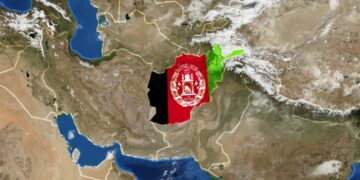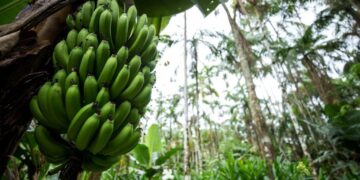Jason J. McSparren 1
1Editor-in-Chief of Sustain-E Journal
*Corresponding Author Email: jmcsp24@gmail.com
Highlights
Abstract
Sustain Earth Journal (Sustain-E), an open-access academic platform, is pivotal in advancing the discourse on sustainability, environmental stewardship, and human well-being in an era fraught with pressing global challenges. This essay highlights key sustainability-focused themes and topics, exemplifying the developmental trajectory of Sustain-E as an authoritative source for sustainability research. Drawing upon the journal’s mission, the United Nations Sustainable Development Goals (SDGs), and contemporary scholarly trends, this trajectory envisions Sustain-E as an influential and authoritative source of knowledge, fostering interdisciplinary dialogues, promoting sustainability research in both natural and social sciences, and contributing to the achievement of the SDGs.
Keywords: Open-access, Journal, Academic, Environmental Stewardship, SDGs.
1. Elucidating upon the Mission of Sustain-E Journal
Sustain Earth Journal, abbreviated as Sustain-E, is an open-access platform dedicated to advancing sustainability research in both natural and social sciences. It has embarked on a journey to establish itself as a leading scholarly publication in environmental and sustainability studies. Our mission is to accelerate the impact of sustainability research across our global society by increasing the accessibility and openness of cutting-edge knowledge. This essay elucidates the journal’s academic trajectory, firmly rooted in our mission and purpose, encapsulated by three primary sections. The first section explores the etymology of the journal’s title as the foundation for clarifying the research objectives and themes. The second section presents themes and topics that comprise the trajectory within the field. The third section offers further inspiration by reflecting on a short list of seminal articles that have influenced the development of environmental politics and asks fundamental questions about the trajectory of sustainability in an erratically dynamic future.
2. The Etymology of Sustain Earth Journal
The title of Sustain Earth Journal is imbued with a rich etymological history that reflects the core mission of the platform. The term ‘journal,’ with Latin and Old French origins denoting a “written daily record or account,” aligns with our journal’s commitment to providing readers with three yearly editions plus additional special thematic issues, book reviews, commentary, and other essay formats published throughout the year. This regular publication schedule ensures that readers always have access to fresh and relevant content they may build upon theoretically or practically apply to a new context.
The word ‘sustain’ in the journal’s title is critical to understanding its underlying mission. This term, evolving from Latin sustinere and Old French sostenir, connotes “providing the necessities of life, giving support, and enduring.” Sustain-E’s publications are predicated on supporting the natural systems, economic institutions, and political frameworks across the globe. Moving from this predicate to the domain of focus, the term ‘earth’ weaves through multiple languages and cultural foundations, representing the concepts of “ground, soil, and the surface of the planet.” Over time, it has retained its fundamental meaning as “the material world and the abode of humanity.” In essence, Sustain-E Journal is a continuous account of academic research focused on supporting the endurance of our planet’s natural systems, environmental integrity, and human institutions that structure politics and the economy across various geographic and political jurisdictions.
3. The Trajectory of Sustainability Studies
The inquiry into the current and future state of sustainability studies holds paramount importance in society, particularly for scholars and practitioners in disciplines of environmental science, governance, and security. It directly addresses climate change impacts on biodiversity (Lavergne et al., 2010; Sala et al., 2000), environmental integrity (Robertson & Swinton, 2005; Young, 1992), social cohesion (Dempsey et al., 2011), human migration (Black et al., 2011), and political stability (Scheffran et al., 2012). While predicting the future of environmental and societal sustainability is laden with complexities and uncertainties, discerning specific trends and developments can illuminate the trajectory of the field and its subcategories in the coming years.
Climate change research and mitigation, a primary focus across disciplines, will continue to investigate the causes, impacts, and mitigation strategies related to climate change (IPCC, 2023; IPCC, 2007; Waskow & Morgan, 2015). Governance scholars will monitor how climate change research informs policies and regulations, including potential carbon pricing mechanisms, emissions reduction targets, and strategies for sustainable resource extraction in a changing climate (Bulkeley et al., 2014).
Biodiversity conservation and restoration remain closely linked to climate change impacts. Environmental scientists will focus on critical concerns such as the identification of biodiversity hotspots, the study of endangered species, and the development of strategies for habitat restoration. Simultaneously, governance components will evolve to protect biodiversity and ecosystems, assessing the impacts of industrial operations on local flora and fauna (Dawson et al., 2011; Locke et al., 2019).
A trend in sustainability studies explores the dynamics around the shift from hydrocarbon fuels to renewable energy sources, including solar, wind, and hydroelectric power. Factors such as climate change concerns, advancements in renewable energy technologies, and increasing government investments are driving this transition (Nooteboom, 2006; Sergi et al., 2019). However, the transition will impact global mineral supply chains, intensifying mining operations while necessitating sustainable extraction and processing practices (Auld et al., 2018; ERGI, 2021; Nakano, 2021).
Additionally, sustainability discourse increasingly centers on the concept of a circular economy, emphasizing waste reduction and resource recycling (Ghisellini et al., 2016; Schöggl et al., 2020; MacArthur Foundation, 2013). This paradigm shift may lead to a greater emphasis on recycling and reusing materials, reducing the environmental footprint of industries across sectors. Consumer preferences are evolving towards more environmentally conscious choices, leading to increased demand for sustainably sourced products and adjustments to the current linear consumer market system.
Technological advancements, such as remote sensing, geographic information systems, and big data analytics, enhance environmental monitoring and compliance enforcement. These technologies are pivotal in tracking the environmental impact of mining activities and supporting evidence-based policymaking. Scholars examining corporate policy and industry governance structures must closely monitor these technological advancements and their implications for sustainability across environmental and societal structures (Ali et al., 2020; Puplampu et al., 2020; IGF, 2020; Tok et al., 2015).
4. Inspiration from Influential Articles
Sustainability science is an expanding and diversifying field that has impacted many disparate scientific disciplines and offers the potential to contribute to the scientific understanding of existing challenges and help drive society toward a green transition (Kajikawa et al., 2014). I recognize the overlap between sustainability science and my field of study, global environmental politics. To further elaborate on themes that may be explored in Sustain-E publications, I highlight a few influential articles in the field of Global Environmental Policy and elaborate on their contributions to sustainability science.
- “Report of the World Commission on Environment and Development: Our Common Future” (The Brundtland Report) (Brundtland, 1987)
- “The Tragedy of the Commons”(Hardin, 1968)
- “The Climate of History: Four Theses” (Chakrabarty, 2009)
- “Planetary Boundaries: Exploring the Safe Operating Space for Humanity” (Rockström et al., 2009)
These articles have significantly impacted the development of global environmental policy and continue to inform discussions and debates across governance and sustainability studies.
4.1 The Brundtland Report (1987)
The “Brundtland Report” was a landmark report published in 1987 by the World Commission on Environment and Development, chaired by Norwegian Prime Minister Gro Harlem Brundtland. The report, titled “Our Common Future,” produced the now ubiquitous term sustainable development and defined it as “meeting the needs of the present without compromising the ability of future generations to meet their own needs” and argued that this concept is the key to achieving global environmental and economic goals.
The report identified three major themes that helped to frame the discourse around global economics and international cooperation on issues of inequality and inequity among states and across societies. The themes that are highlighted include interconnectedness, long-term thinking, and participation. The report emphasized the interconnectedness of environmental, economic, and social issues, arguing that environmental degradation and poverty are interrelated and must be addressed together. Moreover, it emphasized the need for cooperation of all states, whether located in the global south or north and the interdependence of their shared future. The report called for a shift in thinking by state and corporate actors from short-term thinking focused on creating immediate gains towards long-term planning and implementation of sustainable development strategies. The report emphasized multi-stakeholder engagement and the importance of involving all stakeholders, including governments, businesses, and civil society, in decision-making processes related to sustainable development.
The Brundtland report made several recommendations to the international community for achieving sustainable development. It suggested prioritizing investment in education and research to develop new technologies and knowledge in the global south and north to promote sustainable development, encouraging economic growth that is compatible with environmental protection, implementing policies and regulations to protect the environment and natural resources, including measures to combat climate change, and promoting international cooperation to address global environmental challenges, such as the depletion of the ozone layer and deforestation. Overall, the “Brundtland Report” has significantly impacted global environmental policy, and its call for sustainable development continues to shape international discussions and actions related to the environment and economic development.
4.2 The Tragedy of the Commons by Garrett Hardin (1968)
Mitigating human-induced climate change and the global efforts to transition to clean, renewable energy sources highlight the necessity of a collective effort at the local and international levels. In his article “The Tragedy of the Commons,” Garrett Hardin argues that individuals acting in their self-interest will inevitably deplete shared resources, leading to a “tragedy” in which everyone suffers. Hardin uses the example of grazing land to illustrate his argument: if each herder adds more cattle to the land to increase their profit, the land will eventually become overgrazed and destroyed, harming all the herders in the long run.
Hardin suggests that the solution to this problem is not relying on individual conscience or morality but rather prioritizing democratic norms and government intervention to regulate and manage shared resources. He argues that private ownership or other individual-based solutions are not practical or effective, as they still allow for the possibility of overuse and depletion. Overall, Hardin’s article is a cautionary tale about the limitations of individualism and the importance of collective action and government intervention in managing shared resources, in other words, the importance of small ‘d’ democratic norms and institutions. It has been influential in shaping environmental policy and management strategies, as well as discussions about the role of government in regulating the use of natural resources. The logic of Hardin’s conclusions is evident in that governments have the power to regulate society and industry; however, factors such as economic competition and national security complicate the options. This is evident in the post-Paris Agreement world, where most states are falling short of meeting their nationally determined contributions (NDCs) to limiting greenhouse gas emissions and expanding renewable energy sources.
4.3 The Climate of History: Four Theses by Dipesh Chakrabarty (2009)
In “The Climate of History: Four Theses,” Dipesh Chakrabarty argues that the history of human civilization and the history of the Earth’s climate are intertwined and that the way we think about history needs to be re-evaluated in light of the challenges posed by climate change.
Chakrabarty presents four theses to reconsider. The first argues that anthropogenic explanations of climate change prove that human history and natural history are not separate but deeply interconnected. He explains the interconnected relationship between human societies and the earth’s natural climate and how both have shaped and been shaped by the other throughout history. The second thesis posits that the Anthropocene – the geological epoch when humans exist as a geological force – strongly qualifies histories of modernity and globalization. The idea of a single, linear history of human progress is inadequate for understanding the complexities of human-environmental interactions. The third thesis states that the geological hypothesis regarding the Anthropocene requires putting global histories of capital in conversation with the species history of the human race, thus challenging the traditional division between natural history and human history. Finally, the fourth thesis argues that the imprint of species history and the history of capital is a process of probing the limits of historical understanding. In other words, recognizing human responsibility for climate change requires rethinking the concept of modernity and re-evaluating Western ideas about progress and development.
Chakrabarty’s four theses have important implications for how humanity perceives climate change as a crisis and how we might address the associated challenges. By presenting an alternative perspective on established notions of historical themes, he suggests that we need to move beyond a narrow focus on economic growth and technological solutions and instead consider broader questions about the relationship between human societies and the natural world.
Chakrabarty also calls for a more inclusive and global approach to climate change, which recognizes the different ways that different societies have contributed to and are affected by climate change. Finally, he argues that a more nuanced understanding of history and human-environmental interactions is essential for developing effective policies and strategies for addressing climate change.
4.4 Planetary Boundaries: A Safe Operating Space for Humanity by Johan Rockström et al. (2009)
Accepting that human activity impacts the earth’s natural systems is an excellent initial step in mitigating climate change impacts. In “Planetary Boundaries: A Safe Operating Space for Humanity,” Johan Rockström and his co-authors advance the conversation by arguing that human activity has pushed the Earth’s natural systems beyond their safe operating boundaries, leading to potentially catastrophic consequences for human civilization.
The authors identify nine planetary boundaries – including climate change, ocean acidification, and biodiversity loss – that if crossed, could cause irreversible changes to the Earth’s ecosystems and threaten the ability of human civilization to thrive. The article emphasizes the need for a more integrated and proactive approach to managing the Earth’s natural systems, which considers the interconnectedness of different ecological processes and recognizes the limits of the Earth’s carrying capacity.
The authors progress beyond their analysis of planetary distress and offer several policy measures to help address the problem of planetary boundaries. First, they suggest developing new technologies and approaches for sustainable resource use and environmental protection. Second, the authors acknowledge the importance of diplomacy and cooperation in establishing international agreements to limit greenhouse gas emissions and other drivers of environmental degradation. Third, states can make progress by investing in research and monitoring programs better to understand the complex interactions between different ecological processes. Finally, they allude to the incongruence between our system of competitive capitalism and indulgent consumerism and the stress it puts on the planet, thus encouraging the adoption of more sustainable lifestyles and economic models that prioritize environmental protection. Overall, “Planetary Boundaries: A Safe Operating Space for Humanity” argues that humanity needs to take urgent action to avoid crossing the Earth’s planetary boundaries and to move towards a more sustainable and equitable future for all.
These few influential articles underscore environmental and sustainability research’s interdisciplinary and global nature and offer valuable insights for shaping policy and practice across the field. They highlight the importance of perspective and the craft of asking the most poignant questions about society’s relationship to the natural world. As a global community, it appears that we know what steps must be taken to mitigate the worst of the climate change crisis; however, social, economic, and political forces hinder progress. Therefore, continued research is imperative, and the Sustain-E journal stands at the forefront of this empirical endeavor.
5. Conclusion
In conclusion, Sustain-E stands as a beacon of scholarly dedication to advancing sustainability research, underscoring its pivotal role in navigating the complex global challenges of our time. This essay has delved into the journal’s academic trajectory, elucidating its purpose and mission and highlighting key sustainability themes and influential articles that have shaped the discourse on environmental and sustainability studies.
The etymology of the journal’s title emphasizes the enduring commitment to sustainability – supporting natural systems, economic institutions, and political frameworks across the globe, symbolized by the term ‘earth.’ This etymological exploration underscores the journal’s mission of providing a continuous account of academic research that safeguards our planet’s natural systems, environmental integrity, and the institutions that structure our world.
Moreover, the essay has explored the trajectory of sustainability studies, revealing the evolving landscape of challenges and opportunities in this field. The pressing concern of climate change, in conjunction with issues related to biodiversity conservation and the transition to renewable energy sources, has been a central focus. These trends underscore the urgency of addressing critical environmental issues and reshaping our resource management and economic systems approach. The concept of a circular economy, emphasizing waste reduction and resource recycling, reflects a growing global awareness of the importance of sustainable practices. As consumers and industries shift towards more environmentally conscious choices, the sustainability agenda is evolving to meet these demands. Technological advancements, ranging from remote sensing to big data analytics, promise to revolutionize environmental monitoring, compliance enforcement, and the efficiency and sustainability of various value chains. Scholars and practitioners alike must remain vigilant, adapting to these innovations and their implications for sustainability in governance, industry, and academia. I included a few influential articles in the field of Global Environmental Policy to underscore the interdisciplinary and global nature of environmental and sustainability research. These foundational works provide valuable insights for shaping policy and practice in a world that demands thoughtful and collaborative solutions to pressing challenges.
In this intricate tapestry of sustainability research, Sustain-E is well-poised to play a pivotal role, serving as an authoritative source for interdisciplinary dialogue, knowledge dissemination, and a catalyst for achieving the United Nations Sustainable Development Goals (SDGs). This journal attracts knowledge leaders from diverse global backgrounds, echoing that sustainability is a shared concern that transcends geographical boundaries. As we move forward in this collective endeavor, embracing the interdisciplinary nature of sustainability, the principles of environmental stewardship, and the imperative of addressing pressing global challenges, it is with a sense of purpose and shared responsibility that we advance toward a future where the endurance of our planet’s natural systems, environmental integrity, and human institutions are safeguarded. Sustain Earth Journal (Sustain-E) is a crucial ally in this journey, fostering dialogue, knowledge exchange, and a profound commitment to the enduring welfare of our world.
References
Ali, S., Toledano, P., Maennling, N., Hoffman, N., & Aganga, L. (2020). Resourcing Green Technologies through Smart Mineral Enterprise Development: A Case Analysis of Cobalt. SSRN Electronic Journal, February. [Google Scholar][CrossRef]
Auld, G., Betsill, M., & VanDeveer, S. D. (2018). Transnational governance for mining and the mineral lifecycle. Annual Review of Environment and Resources, 43, 425-453. [Google Scholar][CrossRef]
Black, R., Adger, W. N., Arnell, N. W., Dercon, S., Geddes, A., & Thomas, D. (2011). The effect of environmental change on human migration. Global Environmental Change, 21, S3–S11. [Google Scholar][CrossRef]
Brundtland, G. H. (1987). Report of the World Commission on Environment and Development: Our Common Future. Retrieved November 28, 2023. [Website]
Bulkeley, H., Andonova, L. B., Compagnon, M. M., Hale, T., Hoffmann, M. J., Newell, P., Paterson, M., & VanDeveer, S. D. (2014). Transnational climate change governance. Cambridge University Press. [Google Scholar]
Chakrabarty, D. (2009). The Climate of History: Four Theses. Critical Inquiry, 35(2), 197–222. [Google Scholar][CrossRef]
Dawson, T. P., Jackson, S. T., House, J. I., Prentice, I. C., & Mace, G. M. (2011). Beyond Predictions: Biodiversity Conservation in a Changing Climate. Science, 332(6025), 53–58. [Google Scholar][CrossRef]
Dempsey, N., Bramley, G., Power, S., & Brown, C. (2011). The social dimension of sustainable development: Defining urban social sustainability. Sustainable Development, 19(5), 289–300. [Google Scholar][CrossRef]
Ellen MacArthur Foundation (2013). Towards a circular economy Vol 1: An economic and business rationale for an accelerated transition. Retrieved on November 28, 2023. [Website]
ERGI. (2021). Energy Resource Governance Initiative: Mineral Sector Governance for a Responsible Energy Transformation.
Ghisellini, P., Cialani, C., & Ulgiati, S. (2016). A review on circular economy: the expected transition to a balanced interplay of environmental and economic systems. Journal of Cleaner Production, 114, 11–32. [Google Scholar][CrossRef]
Hardin, G. (1968). The Tragedy of the Commons. Science, 162(3859), 1243–1248. [Website][CrossRef]
IGF. (2020). IGF Sustainability Forum Mining 4.0: How Technology and Innovation are Transforming the Mining Sector. [Website]
Intergovernmental Panel on Climate Change. (2023). Climate Change 2021 – The Physical Science Basis. Cambridge University Press. [Website][CrossRef]
IPCC. (2007). Climate change 2007: Impacts, Adaptation and Vulnerability. In M. L. Parry, O. F. CAnziani, J. P. Palutikof, P. J. van der Linden, & C. e. . Hanson (Eds.), Contributions of Working Group II to the Fourth Assessment Report of the Intergovernmental Panel on Climate Change. Cambridge University Press. [Google Scholar]
Kajikawa, Y., Tacoa, F., & Yamaguchi, K. (2014). Sustainability science: the changing landscape of sustainability research. Sustainability Science, 9(4), 431–438. [Google Scholar][CrossRef]
Lavergne, S., Mouquet, N., Thuiller, W., & Ronce, O. (2010). Biodiversity and Climate Change: Integrating Evolutionary and Ecological Responses of Species and Communities. Annual Review of Ecology, Evolution, and Systematics, 41(1), 321–350. [Google Scholar][CrossRef]
Locke, H., Ellis, E. C., Venter, O., Schuster, R., Ma, K., Shen, X., Woodley, S., Kingston, N., Bhola, N., Strassburg, B. B. N., Paulsch, A., Williams, B., & Watson, J. E. M. (2019). Three global conditions for biodiversity conservation and sustainable use: an implementation framework. National Science Review, 6(6), 1080–1082. [Google Scholar][CrossRef]
Nakano, J. (2021). The Geopolitics of Critical Minerals Supply Chains. Center for Strategic & International Studies. Retrieved,on November 28,22023. [Website]
Nooteboom, S. G. (2006). Adaptive Networks: the Governance for Sustainable Development. Eburon Academic Publishers. [Google Scholar]
Puplampu, K. P., Hanson, K. T., & Arthur, P. (2020). Disruptive Technologies, Innovation and Transformation in Africa: The Present and Future. Disruptive Technologies, Innovation and Development in Africa, 3-13. [Google Scholar] [CrossRef]
Robertson, P., & Swinton, S. M. (2005). Reconciling agricultural productivity and environmental integrity: a grand challenge for agriculture. Frontiers in Ecology and the Environment, 1, 38–46. [Google Scholar][CrossRef].
Rockström, J., Steffen, W., Noone, K., Persson, A., Chapin, F. S., Lambin, E., & Lenton, T. M. (2009). Planetary Boundaries: Exploring the Safe Operating Space for Humanity. Ecology and Society, 14(2). [Google Scholar][CrossRef]
Sala, O. E., Stuart Chapin, F., III, Armesto, J. J., Berlow, E., Bloomfield, J., Dirzo, R., Huber-Sanwald, E., Huenneke, L. F., Jackson, R. B., Kinzig, A., Leemans, R., Lodge, D. M., Mooney, H. A., Oesterheld, M., Poff, N. L., Sykes, M. T., Walker, B. H., Walker, M., & Wall, D. H. (2000). Global Biodiversity Scenarios for the Year 2100. Science, 287(5459), 1770–1774. [Google Scholar] [CrossRef]
Scheffran, J., Brzoska, M., Branch, H. G., Link, P. M., & Schilling, J. P. (2012). Climate Change, Human Security and Violent Conflict (J. Scheffran, M. Brzoska, H. G. Brauch, P. M. Link, & J. Schilling, Eds.; Vol. 8). Springer Berlin Heidelberg. [Google Scholar][CrossRef]
Schöggl, J.-P., Stumpf, L., & Baumgartner, R. J. (2020). The narrative of sustainability and circular economy – A longitudinal review of two decades of research. Resources, Conservation and Recycling, 163, 105073. [Google Scholar][CrossRef]
Sergi, B. S., Popkova, E. G., Borzenko, K. V., & Przhedetskaya, N. V. (2019). Public–private partnerships as a mechanism of financing sustainable development. Financing sustainable development: Key challenges and prospects, 313-339. [Google Scholar][CrossRef]
Tok, E., McSparren, J. J., Merekhi, M. A., Elghaish, H., & Ali, F. M. (2015). Crafting smart cities in the gulf region: A comparison of masdar and lusail. In Handbook of Research on Digital Media and Creative Technologies. [Google Scholar][CrossRef]
Waskow, D., & Morgan, J. (2015). The Paris Agreement: Turning Point for a Climate Solution. [Google Scholar][Website]
Young, M. D. (1992). Sustainable investment and resource use: equity, environmental integrity and economic efficiency. [Google Scholar]
About this Article
Cite this Article
APA
McSparren, J. J. (2023). Vision to Impact: Advancing Sustainability Research Through Sustain Earth Journal (Sustain-E). SustainE, 1(2), 1–25. https://doi.org/10.55366/suse.v1i2.3
Chicago
McSpareen Jason A. “Vision to Impact: Advancing Sustainability Research Through Sustain Earth Journal (Sustain-E).” SustainE 1, no. 2 (December 1, 2023): 1–17. https://doi.org/10.55366/suse.v1i2.3.
Received
12 November 2023
Accepted
15 November 2023
Published
December 1, 2023
Corresponding Author Email: jmcsp24@gmail.com
Disclaimer: The opinions and statements expressed in this article are the authors’ sole responsibility and do not necessarily reflect the viewpoints of their affiliated organizations, the publisher, the hosted journal, the editors, or the reviewers. Furthermore, any product evaluated in this article or claims made by its manufacturer are not guaranteed or endorsed by the publisher.
Distributed under Creative Commons CC-BY 4.0
Share this article
Use the buttons below to share the article on desired platforms.











